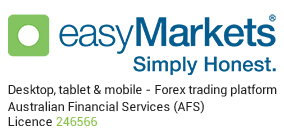What are currency pairs?
In the foreign exchange market, currency is traded in pairs. Pairs have meaning in relation to each other so must always stay together.
The two currencies in a currency pair are traded one against the other. The rate at which they are traded is called the exchange rate. The exchange rate is affected by currency supply and demand.
Most common currencies
The most common currencies traded in the market are called “majors”. Most currencies are traded against the United States dollar (USD). USD is traded more than any other currency. The five currencies most traded next are: the euro (EUR); the Japanese yen (JPY); the British pound sterling (GBP); the Swiss franc (CHF), and the Australian dollar (AUD). Trades of the six major currencies total 90% of the market.
The most common currency pair is EUR/USD.
Pairs exchange rate
The exchange rate is always changing. The value of one currency is determined by market supply and demand forces, by comparing it to another currency. In a currency pair, the first currency is called the “base currency”; the second currency is called the “quote currency” or “counter currency”.
When you buy a currency pair, you buy the base currency and sell the quote currency. The exchange rate tells buyers how much of the quote currency they need to buy one of the base currency. The order in a pair always stays the same, being a common approach by the industry. USD/JPY, for example, is a pair (USD = base, JPY = the quote). The order within the pair, in the way you use the term, does not change. So you either BUY it or SELL it, depending on the direction of the trade. For example: USD/JPY – you either BUY JPY using USD or you Sell JPY to get USD. On the currency rate table on the easyMarkets website you can view the way in which each pair available for trade is ordered.
Here is an example: EUR/USD 1.2500 means you need 1.25USD to buy one euro. It also means if you sell one euro you get 1.25USD. All trades involve buying one currency and selling another currency at the same time. If in the next day the Euro is rising against the USD and the exchange rate is now 1.26, for every 1 Euro that you bought, you have earned 1USD cent. Or, if you traded the opposite direction, for every EUR that you sold (at 1.25) you lost 1USD cent (since you “buy” back the EUR for 1.26).
Buy and sell currency
Traders in the foreign exchange market buy and sell currency to try to make profit. There are two prices for currency: the buy price, called the “BID”; and the sell price, called the “ASK”.
The difference between the “bid” and the “ask” is called the “spread”. The spread represents the difference between what the market maker gives to buy from a trader, and what the market maker takes to sell to a trader.
For example: the EUR/USD bid/ask rate is 1.2100/1.2200. The market maker gives $1.21 when buying from the trader, but takes $1.22 when selling to the trader. If traders buy and sell immediately without any change in the exchange rate, they lose money. This happens because of the spread – traders pay more to buy the currency than they receive when they sell in that one moment.
In fact, the spread is the leading source of income for the market maker. Like any other market, the merchant will buy at one price and sell at a higher price.
Quotes
The price of a currency is called the “quote”. There are two forms of quotes in the Forex market: direct quotes, and indirect quotes.
A direct quote is the price for one US dollar in terms of another currency.
An indirect quote is the price for one UNIT of another currency in terms of the US dollar.
Please note: in general, most currencies are quoted against the USD (e.g. – “direct quote”).
But, the EUR, GBP, AUD, NZD (as well as Gold XAU and silver XAG) are indirect quoted, for example: GBP/USD.
The quote is the price to a currency pair that the deal will be made with. This is unlike an “indication”, where the price given by a market maker is only informational (for trader’s knowledge, rather than for execution). Real time quotes are provided to easyMarkets users.


